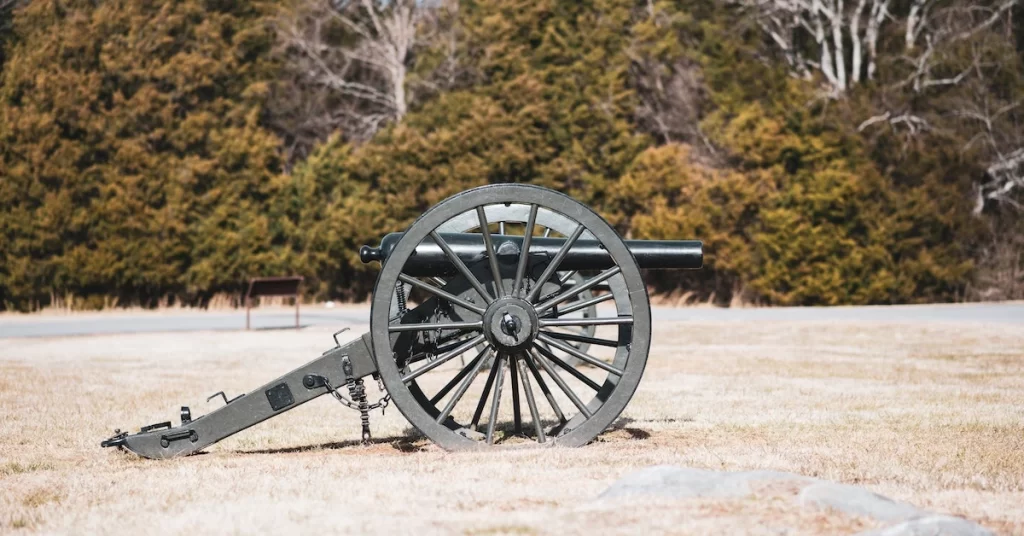The Battle of Verdun was a fight in France and Germany during World War I. It is frequently alluded to as the “mother, everything being equal” because of the enormous number of setbacks it caused. The contention endured from February 21, 1916, to December 18, 1916.
Technology Was Used In The Battle Of Verdun
The technology was used in the battle of Verdun during the fight was for the most part;
- Artillery
- Machine Guns
- Grenades
These innovations would ultimately prompt the finish of a close quarters conflict as they could acquire a benefit over their adversaries.
Read here : What Technology Was Used in The Battle Of TANNENBERG?
- Artillery
The utilization of artillery was to assault foe powers with detonating shells that could make serious harm foe troops and foundations.
- Machine Guns
Hiram Maxim previously created machine guns in 1884 and was utilized by the two sides during World War I.
They are normally mounted on vehicles or on fixed mountings that take into consideration 360-degree fire or a set number of rounds terminated at a time before reloading is required.
- Grenades
Grenades were utilized by the two sides to kill their foes. This is on the grounds that they had a large number of purposes, for example, impairing foe troops, obliterating designs, and creating turmoil among the foe powers.
Which Was the Most Effective Weapon Technology Was Used in the Battle of Verdun?
Artillery was the most horrendous weapon on the Western Front.

Guns could pour down high unstable shells, shrapnel, and toxic substance gas on the adversary and weighty discharge could annihilate troop focuses, wire, and strengthened positions.
The German hostility at Verdun was decreased to build up the Somme front. Nivelle took advantage of his opportunity and went after him.
His Second Army had artillery prevalence and he utilized new strategies in view of expert infantry areas furnished with light machine guns, rifle grenades, mortars, and light field guns.
Read here : Which of The Following Technologies Precedes Horsemanship?
Why The Battle of Verdun is Highlighted?
On the first of February, 1916 the fight starts with a flood. In anticipation of assault, a great many artillery guns of all types barrage the French ramparts.
The vital stronghold of Fort Douaumont, with its cannons, machine guns, and hid defensively covered turrets, is viewed as secure. In any case, it is deficiently monitored. Following five days and tremendous misfortunes, the Germans overcome the Fort.
Batlle of Verdun, (February 21-December 18, 1916), World War I commitment in which the French shocked a significant German hostile.
It was one of the longest, bloodiest, and most-fierce clashes of the conflict; French setbacks added up to around Four Hundred Thousand, German ones to around Three Hundred and Fifty Thousand.
Exactly Three Hundred Thousand were killed.
Which Technology Affected the Battle of Verdun?
The Battle of Verdun was an arranged German attack on the French post of Verdun. The fight was implied, exclusively, to kill or harm however many French officers as could be allowed.
France experienced approximately 400,000 deaths. Eventually, the French opposition at Verdun demonstrated a defining moment, stopping the German development.
The weighty German misfortunes at Verdun joined with considerably more noteworthy setbacks experienced on the Somme likewise made a labor supply emergency inside the German armed force that would turn out to be progressively hard to determine as the conflict advanced.
Making or adjusting technology to fit the requirements of British powers ashore, ocean, and air delivered an amazing variety of gadgets, like altered field radios, field broadcast communications gadgets for weapon spotters, and AAC (Anti-Aircraft) phone headsets which connected batteries with perception expand administrators.
Read here : Why Does The Adoption Of New Technology Tend to Increase The Supply?
Was Trench Conflict Utilized in the Battle of Verdun?
The Battle of Verdun started on 21 February 1916 at 7.15 am the point at which the German armed force started beating the posts and channels with artillery fire.
Erich Von Falkenhayn, Commander-in-Chief of the German armed force, needed to stop the close-quarter’s conflict that had started in the pre-winter of 1914 and get his soldiers going once more.
For What Reason Was Verdun Gone After?
The assault on Verdun (the Germans code-named it ‘Judgment’) came about as a result of an arrangement by the German Chief of General Staff, von Falkenhayn.
He needed to “drain France white” by sending off a huge German assault on a limited stretch of land that had a memorable opinion for the French – Verdun.
How Did German Win the Battle of Verdun?
Involving the experience of the Second Battle of Champagne in 1915, the Germans wanted to catch the Meuse Heights, a phenomenal protective position, with great perception for cannons fire on Verdun made Germans fetch victory over French.
How Did this Battle Come to End?
As battling at Verdun extended endlessly, German assets were extended more slender by facing both a British-drove hostile on the Somme River and Russia’s Brusilov Offensive on the Eastern Front.
In July, the Kaiser, disappointed by the situation at Verdun, eliminated Falkenhayn and sent him to order the ninth Army in Transylvania.
By early December, under Robert Nivelle, who had been delegated to supplant Philippe Pétain in April, the French had figured out how to recover a lot of their lost region.
And over the most recent three days of the fight took 11,000 German detainees before Hindenburg at long last called a stop to the German assaults.
Eventually, Falkenhayn’s longing to restrict the hostile won out, and the activity was bound at first toward the eastern bank of the Meuse.
When these directing levels, Falkenhayn anticipated that the fifth Army should utilize its artillery to overcome any French counter-assault and incur unsatisfactorily high losses for the French armed force.
For sure, assuming that the French did counter-go after Verdun, the outcome of Falkenhayn’s whole system lay on the fifth Army’s capacity to take and hold the overwhelming levels.
Without achieving this objective, the fight gambled deteriorating into one of common steady loss, something the German armed force itself could sick manage
What Are the After Effects of the Battle of Verdun?
The enormous death toll at Verdun — 143,000 German dead out of 337,000 losses, to France’s 162,440 out of 377,231 — would come to represent, more than that of some other fight, the ridiculous idea of close quarters conflict on the Western Front.
Verdun is presently known as the bone factory. Troopers become simple materials for a conflict of weakening. The utilization of fire hurlers and toxin gas grenades brings just seriously enduring and no new leap forwards.
Yet, the mass butchering goes on until December 1916. The fronts are unaltered. Furthermore, a huge number of dead stay in the dirt of Verdun.










